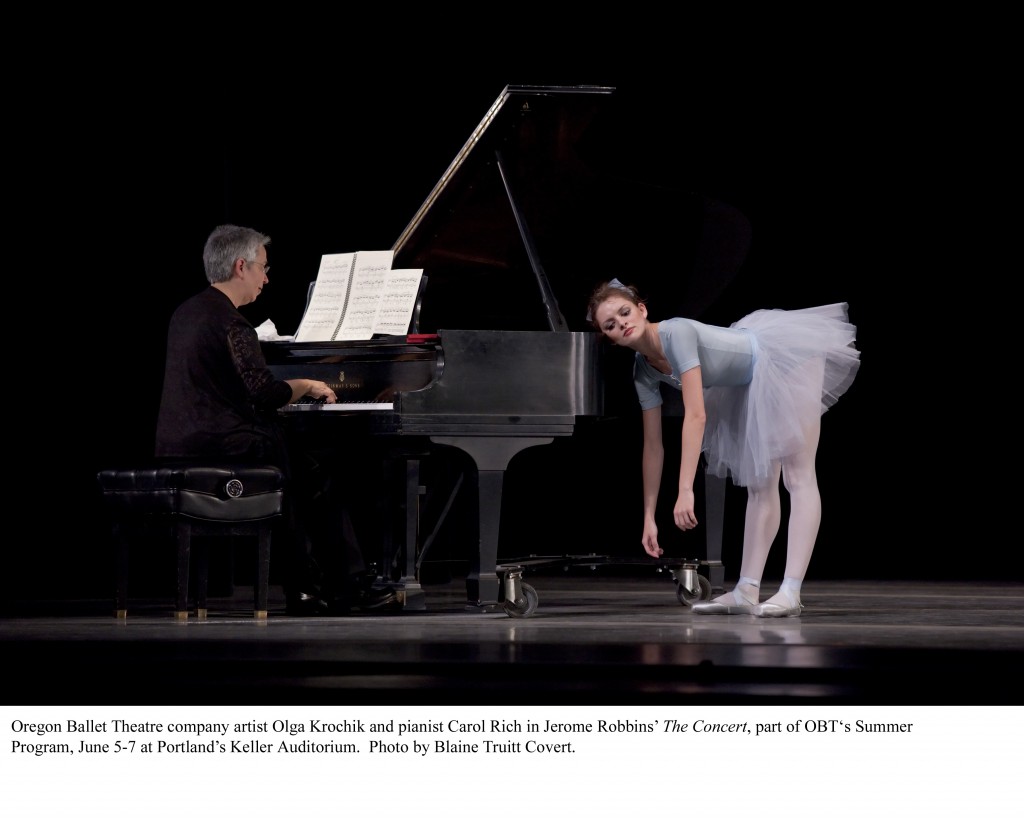
Loyal readers know that Art Scatter is fiercely in favor of protecting Oregon Ballet Theatre from the financial wolves that are nipping at its heels, eager to drag it down and devour it for a mid-recession munch. I’ve made the case that this is Portland’s finest theatrical troupe, a company on the rise nationally, and that to lose it would be a devastating blow to the city. I remain confident, cautiously, that Portlanders will pull together like a hardy band of foresters and help carry the wobbly sojourner out of the economic woods to safety, where it can get its feet back under itself and figure out a prudent path into the future.
So on Saturday afternoon I went with more than usual anticipation to see OBT’s season-ending program of Christopher Wheeldon’s Rush and three dances by that Broadway-driven balletic dramatist, Jerome Robbins. Martha Ullman West, a frequent contributor to Art Scatter, reviews the program perceptively for The Oregonian and, I’m hoping, might post more thoughts later here. Scatter cohort Barry Johnson was there, too, writing on his Portland Arts Watch blog; and The Oregonian’s Grant Butler had a good update in Sunday’s Oregonian on this Friday’s coming benefit blowout. I won’t repeat what they had to say, but give ’em a read!
I went to the Saturday matinee partly because I knew some of the major roles would be performed by the “second stringers” — the alternate casts that don’t do opening night. I like to do this because it’s a terrific way to get a sense of the depth of a company. Yes, several principal dancers and soloists perform in the matinees — Gavin Larsen was superb in Rush, for instance, and Artur Sultanov was an electrically restrained faun in Robbins’ Afternoon of a Faun — but the matinees also give you a chance to see who’s developing in the corps.
Let me tell you who: Grace Shibley, one of the company’s youngest dancers, who paired beautifully with Sultanov in Afternoon of a Faun and simply ran away with the role that company star Alison Roper danced on opening night in Robbins’ witty, gorgeously performed lark The Concert. Shibley is graceful and funny and superbly trained (she came through OBT’s school, which under Damara Bennett’s leadership does wonderful work) and she has personality. The future, if economic troubles don’t bring it tumbling down, is big for her. As for the rest of Saturday’s dancers: Any number of companies across the country would be thrilled to have a starting lineup as good as these “reserves.”
And that got me to thinking about something that I want for this company and this city: I want the joy of succession. Other cities and companies — San Francisco and its San Francisco Ballet, Seattle and its Pacific Northwest Ballet, New York and its New York City Ballet — have the honor and pleasure of seeing their great dancers come to the end of their careers and leave on high notes, secure in the knowledge that capable, fresh young dancers are ready to fill their shoes. It’s how traditions are created; how they’re refreshed and reinvigorated for the future. That tradition is taking root here.
Roper and Sultanov and Larsen and Anne Mueller and Yuka Iino and other OBT stars won’t be dancing forever. Dancers are like professional athletes: They have their time, and then a time comes to hang it up. The Grace Shibleys are always in the wings, ready to learn, ready to take their place in the spotlight, ready to pass the torch on to someone new when their time comes.
And audience members will smile, and cheer, and say, “Isn’t that girl marvelous!” and “Remember when …?” and “Doesn’t he remind you of …”
And the show will go on, always changing, always reinventing itself, always the same.
****************************************
And now, on to tonight’s Drammy Awards at the Crystal Ballroom. What fun: Should I pull out my tux?
 So one day last week I picked up my old copy of
So one day last week I picked up my old copy of 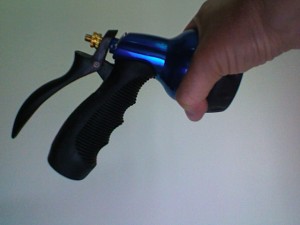 I don’t speak French, so that basically meant to me, “blah blah blah blah ORGY.” And I’m invited.
I don’t speak French, so that basically meant to me, “blah blah blah blah ORGY.” And I’m invited. She came to visit and brought me a new nozzle. It has rhinestones.
She came to visit and brought me a new nozzle. It has rhinestones.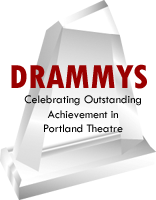 Oops. Wrong award ceremony.
Oops. Wrong award ceremony.
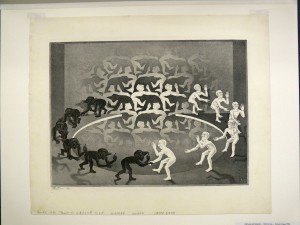 M.C. ESCHER at the Portland Art Museum: Truly an artist for the Age of Engineering — a draftsman for the dreamers, a dreamer for the draftsmen. On Saturday the museum opens Virtual Worlds: M.C. Escher and Paradox, and somehow that’s got us us humming a tune from The Pirates of Penzance:
M.C. ESCHER at the Portland Art Museum: Truly an artist for the Age of Engineering — a draftsman for the dreamers, a dreamer for the draftsmen. On Saturday the museum opens Virtual Worlds: M.C. Escher and Paradox, and somehow that’s got us us humming a tune from The Pirates of Penzance:
 GIFTS OF HONOR at the Portland Art Museum: This very good show has been up since the end of last August in the museum’s Marge Riley Education Gallery, which straddles the museum’s two buildings, but it ends June 30, and you should try to catch it before it disappears.
GIFTS OF HONOR at the Portland Art Museum: This very good show has been up since the end of last August in the museum’s Marge Riley Education Gallery, which straddles the museum’s two buildings, but it ends June 30, and you should try to catch it before it disappears. Yes, long before the parade started, when people were still scarce, a driver held his hand out of a passing van and released two butterflies.
Yes, long before the parade started, when people were still scarce, a driver held his hand out of a passing van and released two butterflies. Perhaps if the poetry cards go away, riders could start carrying around books of poetry — reading them, exchanging them, passing them around. TriMet could have stacks of books on the bus, donated by riders, free for the taking and dropping off again.
Perhaps if the poetry cards go away, riders could start carrying around books of poetry — reading them, exchanging them, passing them around. TriMet could have stacks of books on the bus, donated by riders, free for the taking and dropping off again.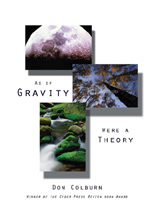
 How do I tell my husband that I’m heating water because our bathtub drain is plugged? As I shower, the water slowly rises to my ankles until I cry for help, quickly rinse and turn off the faucet. Then the water slowly recedes, leaving a gray filthy mess. This isn’t pleasant. It grosses me out.
How do I tell my husband that I’m heating water because our bathtub drain is plugged? As I shower, the water slowly rises to my ankles until I cry for help, quickly rinse and turn off the faucet. Then the water slowly recedes, leaving a gray filthy mess. This isn’t pleasant. It grosses me out.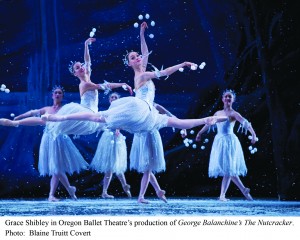 You’ve read
You’ve read